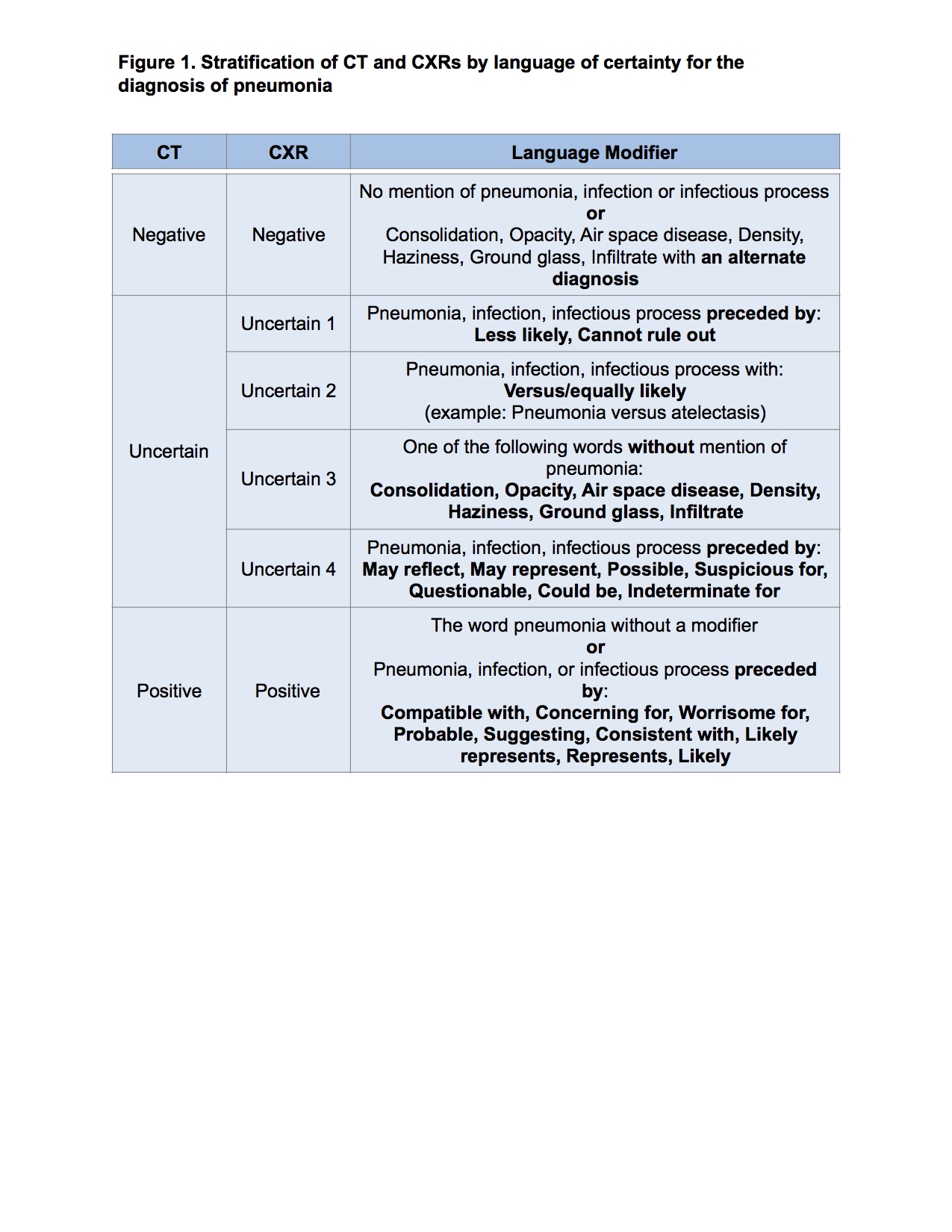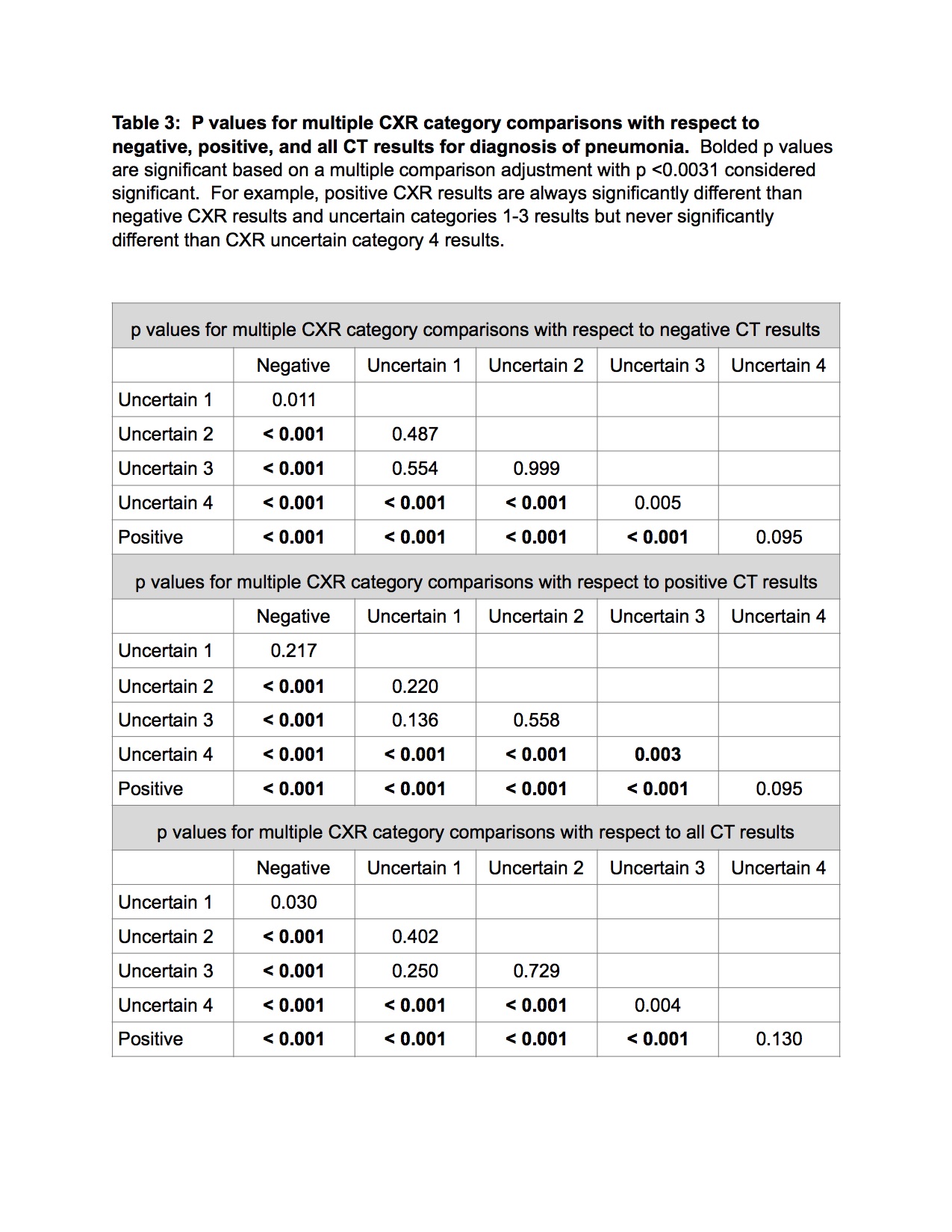Background: Uncertain language, specifically for the diagnosis of pneumonia in chest radiograph reports has been noted in previous research studies (1, 2, 3). In fact, as many as 1 out of every 4 chest x-rays (CXRs) are not positive or negative for pneumonia but are uncertain (4). Some uncertain reports use language modifiers that precede the word pneumonia, such as “less likely” or “may reflect”, to relate confidence in the diagnosis (3, 5). Other uncertain reports describe a radiographic abnormality that may be seen as a result of pneumonia (e.g. consolidation, infiltrate, airspace disease), without providing a differential diagnosis (6, 7, 8). When confronted with these uncertain radiologic studies, clinicians lack evidence on how to interpret the radiologic report (1, 2, 3). The purpose of this study was to validate an a priori stratification of chest radiograph results for diagnosing pneumonia, based on language of certainty, using CT results as the reference standard.
Methods: We retrospectively evaluated 2,411 charts of hospitalized patient visits, ≥18 years, admitted to medicine, who received a CXR and non-contrast chest CT (CT) within 48 hours of Emergency Department registration. The CXR and CT report impressions were categorized as negative, uncertain, or positive. Uncertain CXRs were further stratified into 4 categories based on language modifiers for the degree of pneumonia certainty. Comparison of CXR and CT results were determined using chi-squared; a P-value of 0.0031 was considered significant to account for multiple comparisons.
Results: CXR reports for the diagnosis of pneumonia revealed the following distribution: 61% negative, 32% uncertain, and 7% positive; CT reports were 55% negative, 22% uncertain, and 23% positive for the diagnosis of pneumonia. Significant differences were found among the CXR categories when using CT as the reference standard for the diagnosis of pneumonia. (p<0.001). The negative CXR category was not significantly different than the uncertain category with the most uncertain language (p=0.030) but was significantly different from all other uncertain categories and positive results (each p<0.001). Positive CXR results The positive CXR category was not significantly different than the least uncertain category (most certain language) (p=0.130) but was significantly different from all other categories (each p<0.001).
Conclusions: Language used in CXR reports to diagnose pneumonia exists in categories of varying certainty and should be considered when evaluating patients for pneumonia. Without understanding the correlation between language and certainty of diagnosis, we may be misinterpreting the communication from radiology reports.


